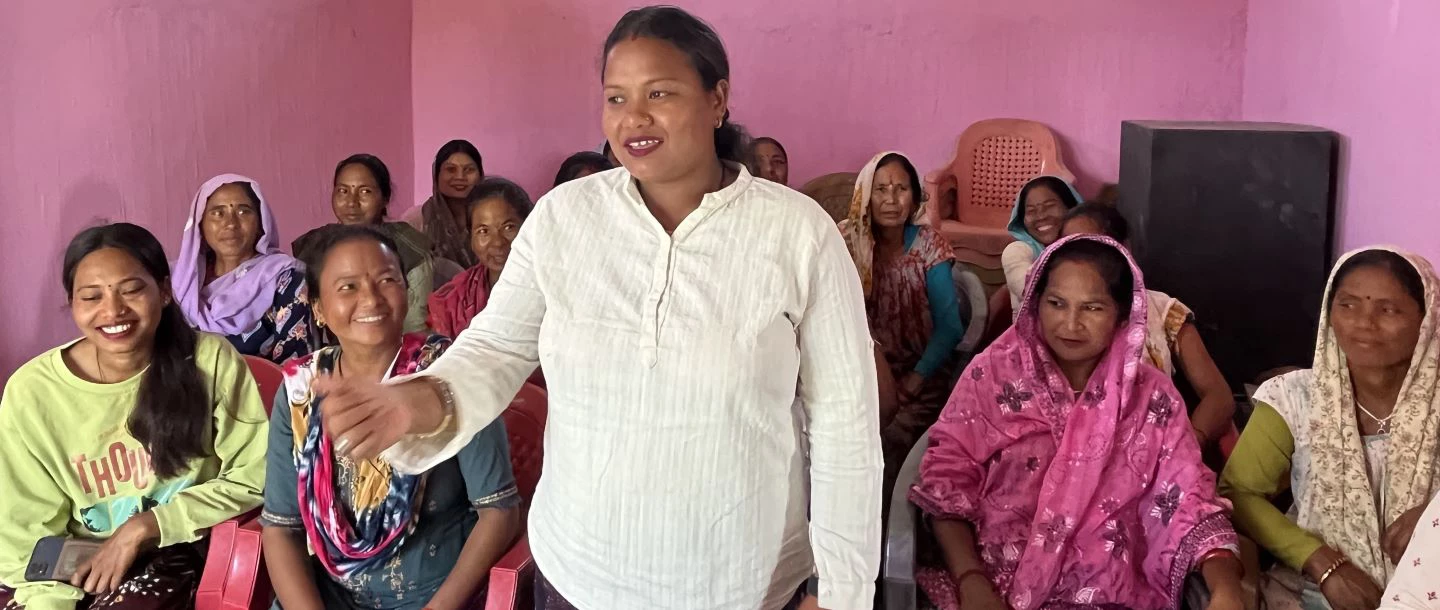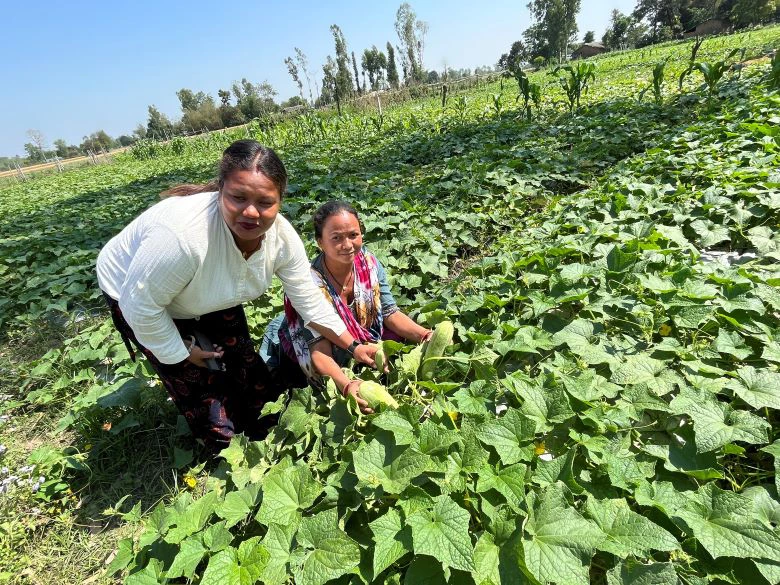 Meena Chaudhary
Meena Chaudhary
Public investment in agriculture and irrigation services is critical to accelerating inclusive rural livelihood transformation in Nepal’s rural areas. We know this because we hear countless stories of progress in Nepal's rural areas where the government is investing in revamping these services.
One of them is that of Meena Chaudhary, a mother of one, from Tikapur in Nepal’s Sudurpashchim Province. Meena is part of a women's group called the Deepjyoti Female Farmers' Group, and one of the many rural women dependent on agriculture for their livelihoods. But her income from agriculture remained low and stagnant for many years because she depended exclusively on rainfed agriculture and lacked access to the required inputs and services to make farming profitable.
Then, through World Bank financing, the government of Nepal embarked on a national pride project in 2018 to modernize and expand the Rani Jamara Kulariya Irrigation Scheme (RJKIS) to improve irrigation and agricultural services in her area. Since then, Meena has seen a six-fold increase in her income.
An improved irrigation service for efficient water management combined with better agricultural support services, including training, access to high-quality seeds, farm equipment, value-chain infrastructure, and markets enabled Meena and her group members to increase the quantity and quality of their agricultural produce and command a higher price.
An improved irrigation service for efficient water management combined with better agricultural support services, including training, access to high-quality seeds, farm equipment, value-chain infrastructure, and markets enabled Meena and her group members to increase the quantity and quality of their agricultural produce and command a higher price.
"My income from vegetables is now 120,000 Nepali Rupees (NPR) per year, compared to 20,000 before the project", says Meena.
Equipped with knowledge and skills in improved farming techniques, Meena and her group members now undertake collective farming and cultivate vegetables such as cucumber, cabbages, potatoes, and tomatoes, including off-seasonal ones.
Their vegetable production has reached 20 tons per hectare, nearly 40 percent above the national average of 14 tons per hectare. The increased production and income have enabled these women to meet household expenses and pay for their children’s education which they could not afford previously. “Without this income, we would not have been able to send our children to good schools," Meena adds.
Beyond the cash earnings, the availability of fresh vegetables all year round has also contributed to the nutrition of the women farmer’s families and community. Encouraged by their success, the group has plans to diversify into other crops, invest in processing, and value addition of their products.
Meena's story is not unique. Many other farmers we spoke to in the same community share similar sentiments.

Tekendra Dhami, who was engaged in traditional ways of banana cultivation for decades, has seen increased production after adopting better farming technology.
"Technologies introduced by the project such as tissue culture saplings, highly productive and wind-resistant varieties such as Grand Nain, the drip irrigation system, among others, have contributed to the increased production of bananas on my farm and other farms in the Tikapur area," says Tekendra. The net profit from his banana farm is now about NPR 4 million per year, compared to less than one million prior to adopting the project-supported technologies.
Apart from the irrigation and agriculture support services, the RJKIS project includes investments in flood and erosion control in the irrigation command areas, rural roads and bridges for connectivity and market access, and watershed conservation.
Stories of Meena and Tekendra demonstrate that public investments such as the RJKIS project support Nepal’s green, resilient, and inclusive development (GRID) approach that puts the underserved people first while also building the resilience of the natural resources on which they depend.
As Nepal pivots towards a GRID pathway to lift millions of rural people out of poverty, more investments in productive, inclusive, and resilient natural resource-based value chains as shown by the Rani Jamara Kulariya Irrigation Scheme will be critical to boost rural household incomes while building their resilience to climate shocks.



Join the Conversation